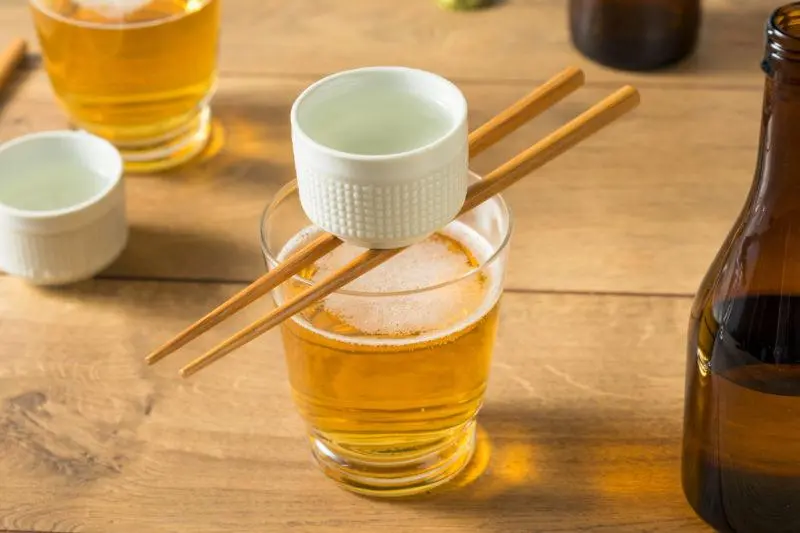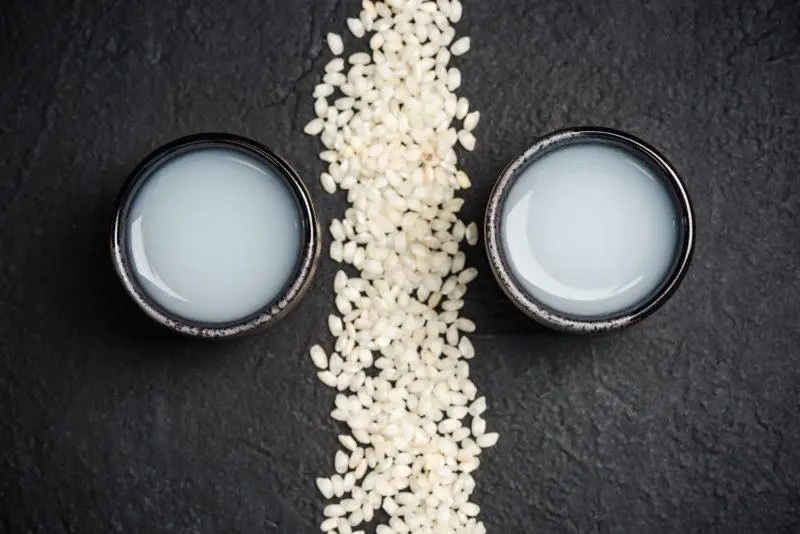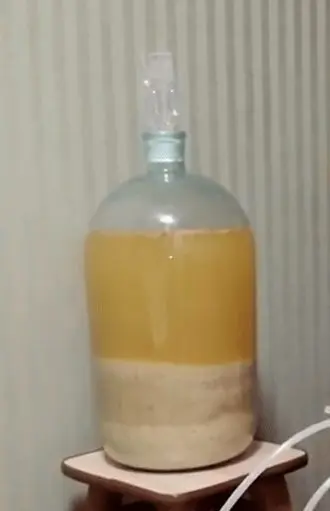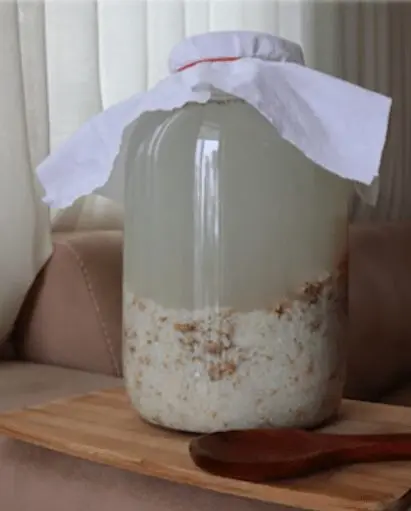Contents
We continue to make wines out of season. In the last article, I gave recipes for orange wine, earlier for ginger wine, even earlier, Don Anointed shared the secrets of making wine from raisins (this article is required reading, since raisin wine is very closely related to rice wine). This time I propose to make wine from rice at home, a drink that is unique and interesting by all standards. It is very easy to prepare, and the result can be enjoyed in a couple of months. Well, a few paragraphs later, you will understand that thanks to the neutral taste of the base of such a wine, you can create your own unique product.

When it comes to rice wine, sake at best comes to mind. If you drop deeper, rice wine is called a huge group of alcoholic beverages, which are prepared mainly in the countries of East, Southeast and South Asia. These are Chinese miju (considered the progenitor of sake), ang jiu, shaoxing, and Thai sato, and Bhutanese macaw, and Lao-Lao from Laos. Almost every country in Asia has several drinks that are classified as rice wine. True, if you drop deeper, then they are not wines at all.
Wine in the world is conventionally called any alcoholic drink prepared as a result of the fermentation of “fruit and berry sugars”. Rice wine is a product of the fermentation of starch saccharified with enzymes, that is, drinks from this category are mostly beer. This is the time to talk about Koji spores, fermented rice (Kome-Koji), cold saccharification, etc. But I will not do this, because a separate article is planned on the preparation of sake and similar drinks. Further, we will focus on wine in a more or less classical sense.

Yes, we will not ferment fructose and other “fruit and berry sugars”. Accordingly, the resulting drink is also not correct to call wine. But to hell with the conventions, call it what you want. More importantly, it is one of the easiest fermented drinks to make and can be made any time of the year. It is customary for us not to be limited to only one recipe, so there will be two recipes. The first definitely deserves more attention, because its experimental potential is much greater and without any effort you can get a decent wine with an interesting spicy taste and aroma, which will go well in the summer in its pure form or become a good base for other drinks.
An obligatory ingredient in rice wine in the context of the recipes described below is raisins. Its quality has a great influence on the organoleptic of the drink, so you should not save on it. Also worth mentioning are the preservatives that are now coated on raisins and most other foods to increase their shelf life. Be sure to rinse the raisins with boiling water several times, this is very important.
Tips before starting to make rise wine
- To prepare the simplest Japanese alcohol, it is enough to stock up on rice, clean water and yeast.
- If you want to get a more aromatic drink, you should try the recipe with the addition of spices or citrus fruits.
- Rice is suitable for any variety, but it is better to choose round, unpolished or sticky Asian.
- Yeast uses wine or Japanese “koji”, otherwise it will turn out not wine, but mash.
- The grains are thoroughly washed with running water before processing: this will eliminate the need to clarify the finished product.
- All utensils should be sterilized before use. If the wine is too strong, you can sweeten it with sugar and shake it.
- Drinks based on fungi are pasteurized using a water bath without heating them above 70 ° C.
- Refrigerate rice wine before drinking.
https://www.youtube.com/watch?v=XrBTS7Ija1w
Universal recipe for rice wine with spices

Expected yield of wine: 10 l
Expected fortress: 16-17%
- 7,5 l + 1,2 l water
- 2 kg rice (any kind)
- 1,5 kg + 1,3 kg sugar
- 50 g citric acid
- 200 g raisins (more possible, up to 0,5 kg)
- 5 g yeast feed (optional)
- 1 tsp wine yeast (tokay, sherry, etc.)
Spices of your choice*:
- 10 clove buds
- 10 peas allspice
- 15 peas black pepper
- 20 g of vanilla sugar
- 0,5-1 tsp nutmeg (ground)
- 1 tsp ginger root (ground)
- 1,5 hours. L. Timyyana
- 1 tsp basilica
- 1 tsp cinnamon (ground)
- 2 tsp turmeric (no slide)
* – add all the spices at your discretion during the preparation of the must and remove during the first filtration of the wine.
First you need to put the yeast on confusion (you can use the leaven from the Anointed article, the one about raisin wine). Boil 7,5 liters of water, remove from heat, dissolve 1,5 kg of sugar and citric acid in it, let cool to room temperature. Rinse the rice several times (5-7), achieve the result when the water remains clear after washing. Transfer the washed rice to a fermentation container, pour over the chilled syrup. Pour the raisins into a sieve and pour boiling water over several times to wash off all the preservatives, and then chop coarsely and add to the fermentation tank. Add yeast feed, mix and add the prepared yeast. Install a water seal on the container.
Keep in mind that rice with raisins take up a certain volume and this must be taken into account when choosing a fermentation tank (fermenter), which should not be filled more than 3/4, in extreme cases 4/5. For convenience, you can use the following proportion: 1 kg u1,2d XNUMX liters.
4-5 days after the start of fermentation, add chilled syrup to the wort, boiled from 1,3 kg of sugar and 1,2 liters of water. Throughout the vigorous fermentation, which usually lasts 3-4 weeks, keep the temperature above 20оC. After 6 weeks of active fermentation, drain the wine using a silicone hose, additionally straining it through a sieve, and transfer all the remaining solid parts of the must (rice, raisins, spices) to gauze and let all the liquid drain (do not squeeze!). Add the drained liquid to the previously drained wort, bring the total volume of unboiled water to 10 liters and install a water seal. The fermentation tank should be left in a cool place for fermentation.

After 6 weeks, drain the young rice wine from the yeast sediment, add sugar to taste and leave under the same conditions for another 6 weeks. Usually, after the secondary aging, there is almost no yeast sediment, and the wine itself is transparent and already has a pleasant taste. It’s time to remove it for the last time from the sediment, bottle it and send it for a long exposure to a cool place. Homemade rice wine turns out clear, almost like white grape wine (if without spices), with a slight tint of raisins. This can be corrected with a little burnt sugar. The wine opens after 6-12 months of aging. It is ideal for making sangria, as well as the basis for white vermouth (if you do not add spices, with spices the wine is very similar to vermouth without it).
https://www.youtube.com/watch?v=6QR5yXa_mTs
Simple rice and raisin wine
If the previous recipe, for some reason, seems complicated to you, I suggest a simpler one. The principle of preparation remains the same. You can add spices from the above, but at your discretion.

- 500 g rice (any kind)
- 100 г изюма
- 1250 g sugar
- 2 limes or lemons
- 3 liter of clean water
- ½-1 tsp wine yeast
Rinse the rice well and place it in a fermentation tank (the so-called “bharani”, a vessel made of Chinese clay, is often used for this). Add scalded, coarsely chopped raisins, sugar, lime juice and zest to the rice. Pour everything with clean water at room temperature (you can use boiled water, but then it needs to be saturated with oxygen) and mix well. Add yeast and mix well again. A water seal is not needed here – it is enough to cover the container with a clean cloth and press down on top with a lid. Every day, the contents must be intensively mixed for 3-5 minutes for 10-12 days. After that, let the wine stand for another 2 days at rest and strain it through several layers of gauze.

After straining the wine, you can continue to cook in two ways. The first involves following the winemaking process, that is, after-fermentation and constant plums (as in the previous recipe). You can do otherwise, in an amateurish way: immediately pour young wine into clean bottles, filling them ¾ of the volume, tightly cork and leave to ripen in a cool place (I advise you to fill one plastic bottle to control carbon dioxide). In any case, such wine can be drunk after a couple of weeks, but it is better to wait a couple of months – during this time the drink will completely lighten up and acquire a beautiful golden color.
PS I advise you to mix rice wine, prepared according to the first recipe with spices, with frozen viburnum juice. Everything on the sim!
https://www.youtube.com/watch?v=NkBGjRTE16Y









